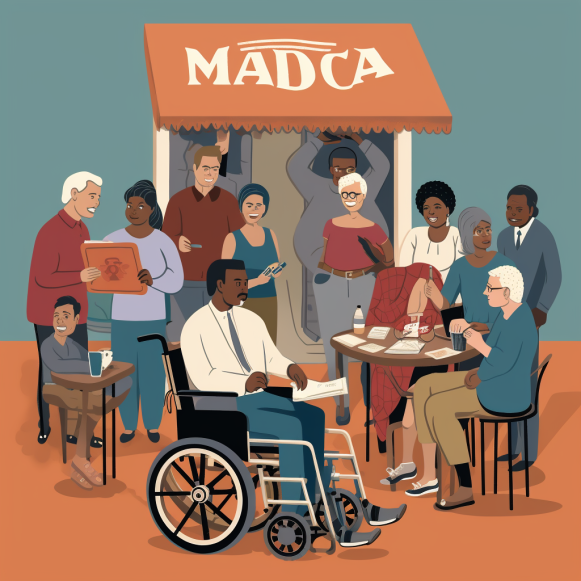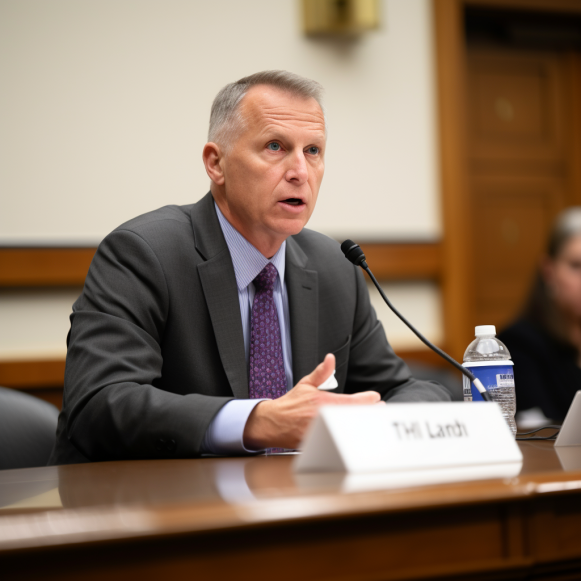Medicare enrollees can switch coverage now. Here’s what’s new and what to consider

Beneficiaries should examine their current coverage because plans may have changed, experts say.
When stores start selling Halloween candy and flu shots — and the airwaves and mailboxes are filled with advertisements for Medicare options — consumers know it’s fall.
It’s that time of year again for the 65 million Americans covered by Medicare, the federal health-care program for the elderly and some people with disabilities.
Enrollees in the traditional program or Medicare Advantage plans offered by private insurers can change their coverage from Oct. 15 to Dec. 7. (Whether or not open enrollment season is in effect, most first-time enrollees sign up within a few months of their 65th birthday.)
A lower out-of-pocket cost limit for some patients taking expensive drugs is one of the new features for 2024.
Experts advise beneficiaries to review their current coverage because health and drug plans may have changed, including the pharmacies or medical providers in their networks and the cost of prescriptions.
“The advice is to check, check, and double-check,” Bonnie Burns, a consultant with California Health Advocates, a non-profit Medicare advocacy program, said.
However, as anyone who has participated in the program or who has assisted friends or relatives with coverage decisions knows, it is complicated.
Here are a few things to remember.
Understand the Differences Between Medicare and Medicare Advantage
Traditional Medicare recipients can see any participating doctor or hospital (and the vast majority do), whereas Medicare Advantage recipients must choose from a specific list of providers — a network — that is unique to that plan. Some Advantage plans have a more extensive network than others. Always confirm that your preferred doctors, hospitals, and pharmacies are covered.
Because traditional Medicare does not cover prescriptions, members should consider enrolling in Part D, the optional drug benefit that includes a separate premium.
In contrast, most Medicare Advantage plans include drug coverage, but check before enrolling as some do not. These private plans are heavily advertised, frequently boasting that they provide “extras” not available through traditional Medicare, such as dental or vision coverage. Read the fine print to see if such benefits are subject to any limitations.
Those 65 and older who are new to traditional Medicare can purchase a supplemental, or “Medigap,” policy, which covers many out-of-pocket costs, such as deductibles and copays, which can be substantial. Beneficiaries typically have a six-month window after enrolling in Medicare Part B to purchase a Medigap policy.
Switching from Medicare Advantage to traditional Medicare during open enrollment can cause complications for those looking to purchase a Medigap policy. With a few exceptions, private insurers offering Medigap plans can refuse applicants with health conditions, raise premiums, or limit coverage for preexisting conditions.
Although rules vary, some states provide beneficiaries with greater assurances that they can switch Medigap plans without answering health-related questions.
To add to the confusion, there is a second open enrollment period each year, but it is only for those enrolled in Medicare Advantage plans. From January 1 to March 31, they can change plans or return to traditional Medicare.
Drug Coverage Has Improved — Significantly
Beneficiaries who have enrolled in a Part D drug plan or who receive drug coverage through their Medicare Advantage plan are aware that there are numerous copays and deductibles. However, for those who require a large number of expensive medications, some of these costs will be eliminated by 2024.
The Inflation Reduction Act of President Joe Biden imposes a new annual limit on Medicare beneficiaries’ out-of-pocket drug costs.
“That policy is going to help people who have very expensive medications for conditions like cancer, rheumatoid arthritis, and hepatitis,” said Tricia Neuman, senior vice president and program director for the KFF Medicare policy program.
According to KFF, the cap will greatly benefit beneficiaries who fall into Medicare’s “catastrophic” coverage tier — an estimated 1.5 million Americans in 2019.
This is how it works: The cap is triggered after patients and their drug plans spend approximately $8,000 on drugs. According to KFF, this amounts to approximately $3,300 in out-of-pocket spending for many patients.
Given the high prices of many drugs for serious conditions, some people may reach the cap in a single month. Beneficiaries who reach the cap do not have to pay anything out of pocket for their medications that year, potentially saving them thousands of dollars.
It is important to note that this new cap will not apply to drugs that are infused into patients, typically at doctor’s offices, such as many cancer chemotherapies. Medicare Part B, which covers doctor visits and other outpatient services, covers these medications.
According to the Medicare Rights Center, Medicare will also expand eligibility for some low-income beneficiaries next year to qualify for low- or zero-premium drug coverage with no deductibles and lower copayments.
According to Burns, insurers offering Part D and Advantage plans may have made other changes to drug coverage.
Beneficiaries should review their plan’s “formulary,” which includes a list of covered drugs as well as the cost of the medications. Make a note of whether prescriptions require a copayment (a fixed dollar amount) or coinsurance (a percentage of the drug cost). According to Burns, copayments generally result in lower out-of-pocket costs than coinsurance.
Assistance Is Available
Consumers in many parts of the country have a choice of more than 40 Medicare Advantage plans. That can be intimidating.
The Medicare online plan finder provides information on the Advantage and Part D drug plans that are available in your ZIP code. It enables users to drill down into specifics about benefits and costs, as well as the network of health providers provided by each plan.
Insurance companies are required to keep their provider directories up to date. However, experts advise enrollees to confirm participation in any given Advantage plan with their preferred doctors and hospitals. Concerned about drug costs, Neuman advises people to “check whether their pharmacy is a ‘preferred’ pharmacy and if it’s in network” under their Advantage or Part D plan.
“There can be a significant difference in out-of-pocket spending between one pharmacy and another, even in the same plan,” she told me.
According to Emily Whicheloe, director of education at the Medicare Rights Center, Medicare beneficiaries should look up their prescriptions, dosages, and pharmacies to get the most accurate picture of estimated drug costs.
“It’s also a good idea for people with specific drug needs to contact the plan and ask, ‘Hey, are you still covering this drug next year?'” If not, switch to a plan that is,” she advised.
Additional enrollment assistance is available for free through the State Health Insurance Assistance Program, which is available in all states.
Beneficiaries can also ask questions by calling the Medicare toll-free hotline at 1-800-633-4227, or 1-800-MEDICARE.
Insurance brokers can also assist, but there is a catch. “Working with a broker can be nice for that personalized touch, but know they might not represent all the plans in their state,” Whicheloe went on to say.
Avoid telemarketers at all costs, according to Burns. In addition to TV and mail advertisements, many Medicare beneficiaries receive phone calls promoting private insurance plans.
“Just hang up,” said Burns.





